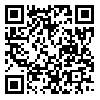Volume 11, Issue 4 (3-2019)
ijhe 2019, 11(4): 529-546 |
Back to browse issues page
Download citation:
BibTeX | RIS | EndNote | Medlars | ProCite | Reference Manager | RefWorks
Send citation to:



BibTeX | RIS | EndNote | Medlars | ProCite | Reference Manager | RefWorks
Send citation to:
Sarlak F, Nabizadeh R, Yunesian M, Rastkari N. Investigate the iodine content in table salts used by families covered by health services of Tehran University of Medical Sciences in year 2017. ijhe 2019; 11 (4) :529-546
URL: http://ijhe.tums.ac.ir/article-1-6140-en.html
URL: http://ijhe.tums.ac.ir/article-1-6140-en.html
1- Environmental Health Engineering, Department of Environmental Health Engineering, School of Public Health, Tehran University of Medical Sciences, Tehran, Iran
2- Center for Air Pollution Research, Institute for Environmental Research, Tehran University of Medical Sciences, Tehran, Iran AND Environmental Health Engineering, Department of Environmental Health Engineering, School of Public Health, Tehran University of Medical Sciences, Tehran, Iran ,rnabizadeh@gmail.com
3- Environmental Health Engineering, Department of Environmental Health Engineering, School of Public Health, Tehran University of Medical Sciences, Tehran, Iran AND Department of Research Methodology and Data Analysis, Institute for Environmental Research, Tehran University of Medical Sciences, Tehran, Iran
4- Center for Air Pollution Research, Institute for Environmental Research, Tehran University of Medical Sciences, Tehran, Iran
2- Center for Air Pollution Research, Institute for Environmental Research, Tehran University of Medical Sciences, Tehran, Iran AND Environmental Health Engineering, Department of Environmental Health Engineering, School of Public Health, Tehran University of Medical Sciences, Tehran, Iran ,
3- Environmental Health Engineering, Department of Environmental Health Engineering, School of Public Health, Tehran University of Medical Sciences, Tehran, Iran AND Department of Research Methodology and Data Analysis, Institute for Environmental Research, Tehran University of Medical Sciences, Tehran, Iran
4- Center for Air Pollution Research, Institute for Environmental Research, Tehran University of Medical Sciences, Tehran, Iran
Abstract: (3696 Views)
Background and Objective: Iodized salt is one of the most important sources iodine in Iran. Former studies show that the iodine levels were insufficient both in distribution and consumption levels. The aim of this descriptive-analytical sectional study was to investigate the iodine content in table salts used by families covered by health services of Tehran University of Medical Sciences during 2017.
Materials and Methods: 315 families from SIB (Integrated Health System) with random sampling method were studied. A questionnaire was filled out through interviews and salt samples were taken for analysis. The iodine in all samples was measured by iodine-meter kits and one third of the samples were also measured by titration.
Results: The average iodized salt consumed by the families was 18.53 µg/g iodine, which is less than the national standard. Iodine amount in %12 of the samples was not in compliance with WHO standards. In %59 of the samples, there was less iodine amount than the previous standard level set by the Iranian Ministry of Health (20-55 µg/g iodine). None of the samples were compatible with the new standards set by the Iranian Ministry of Health (30-60 µg/g iodine).
Conclusion: it was found that there is no meaningful relation between the variables such as Material, type of salt container and the amounts of iodine (p>0.05). Families are not aware of the effects of iodine deficiency.
Materials and Methods: 315 families from SIB (Integrated Health System) with random sampling method were studied. A questionnaire was filled out through interviews and salt samples were taken for analysis. The iodine in all samples was measured by iodine-meter kits and one third of the samples were also measured by titration.
Results: The average iodized salt consumed by the families was 18.53 µg/g iodine, which is less than the national standard. Iodine amount in %12 of the samples was not in compliance with WHO standards. In %59 of the samples, there was less iodine amount than the previous standard level set by the Iranian Ministry of Health (20-55 µg/g iodine). None of the samples were compatible with the new standards set by the Iranian Ministry of Health (30-60 µg/g iodine).
Conclusion: it was found that there is no meaningful relation between the variables such as Material, type of salt container and the amounts of iodine (p>0.05). Families are not aware of the effects of iodine deficiency.
Type of Study: Research |
Subject:
General
Received: 2018/09/29 | Accepted: 2018/12/12 | Published: 2019/03/12
Received: 2018/09/29 | Accepted: 2018/12/12 | Published: 2019/03/12
Send email to the article author
| Rights and Permissions | |
 |
This work is licensed under a Creative Commons Attribution-NonCommercial 4.0 International License. |





